Belemnite fossils are the most prevalent fossils that remain from the Jurassic and Cretaceous age; a period that lasted for about 150 million years. Popular contemporaries of the belemnites were the dinosaurs, and they actually went extinct around the exact same time. Their fossils tell us a lot about the climate and the seas of our prehistoric world.
How come these animals with squid-like bodies were so numerous, and where can you find a belemnite fossil yourself?
Table of Contents
What is a Belemnite?
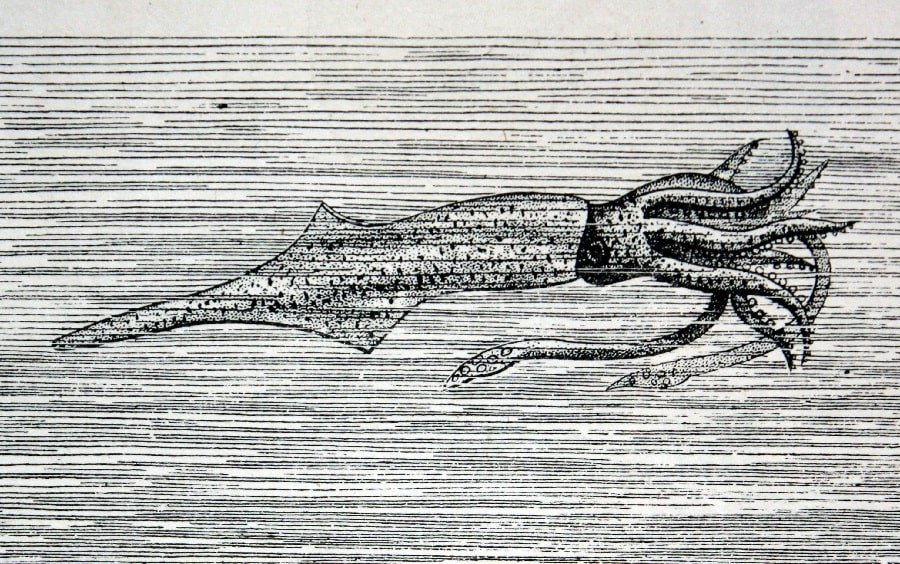
Belemnites were marine animals, an ancient family of modern cephalopods: squids, octopuses, cuttlefish, and nautiluses and they very much looked like them. The sea animals lived in the early Jurassic Period and the Cretaceous period, which began about 201 million years ago and ended 66 million years ago. Their fossils are currently one of the best geological indicators for prehistoric times.
READ MORE: Prehistory: Paleolithic, Mesolithic, Neolithic Periods, and More
Around the time that the dinosaurs vanished, belemnites also disappeared from the face of the earth. Marine animals have been the subject of many archeological theories, but also many myths. Therefore, they remain a fascinating record of our prehistoric past, both on a physical and a social level.
Belemnites can be classified into various categories, just like any other animal. They are mainly distinguished based on shape, size, growth characteristics, and features that are visible to the naked eye. The smallest class of belemnites were smaller than a dime, while the biggest ones could grow up to 20 inches long.
Why are They Called Belemnites?
The name belemnites comes from the Greek word belemnon, which means dart or javelin. Their name probably came from their bullet-like shape. It is not very probable, however, that the ancient civilizations that gave them their name actually knew they were prehistoric animals. More likely, they just thought it was a funny-shaped rock.
What Did a Belemnite Look Like?
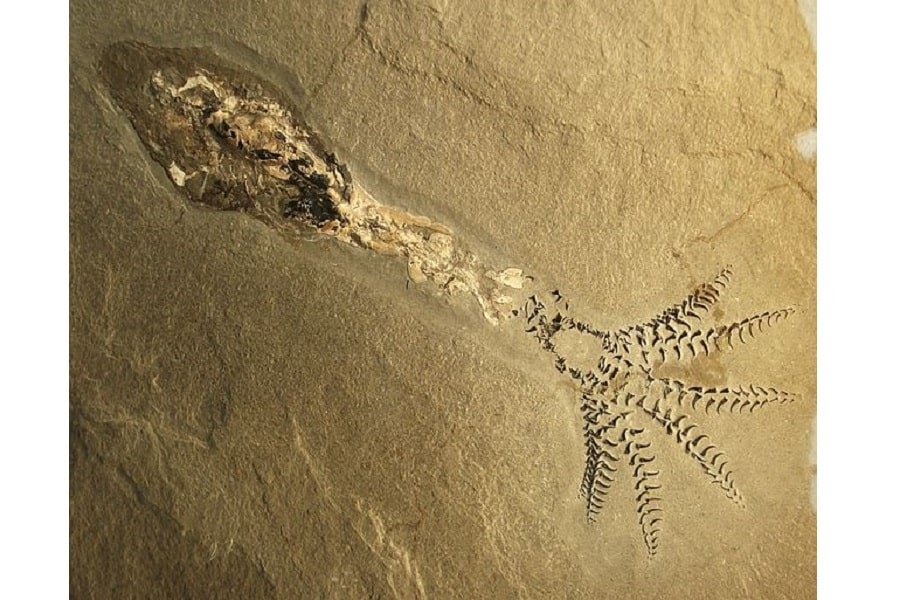
Unlike modern squid, belemnites actually had an internal shell, which could be seen as a hard skeleton. Their tail was bullet-shaped with an inside composed of fibrous calcite crystals. While they are rare, some belemnite fossils also contain ink sacs just like the ones you see in modern squids. So they had both hard and soft parts.
On the one side, you find their tentacles and their head. On the other side, you see the tail with the hard skeleton. The funny-shaped tail had various different purposes. The skeleton was located near the far end of the tail and is formally called the belemnite rostrum, or belemnite rostra in the plural. Non-scientifically, they are also referred to as belemnite ‘guards’.
The bullet-like shape of the animal in combination with their leathery skin meant that they could move swiftly through the water. Not the whole body is preserved with the fossils, however. The part that was mostly preserved was just the inside skeleton of the animal. All the soft parts vanished after millions of years of fossilization.
Belemnite Rostrum (Belemnite Guard) and Phragmocone
Moving closer to the head and the tentacles of the ancient creature, a cone-like structure appears. It forms right under the rostrum, around the middle of the tail. This ‘mantle cavity’ is called the alveolus, and within the alveolus, the phragmocone can be found.
Some fossilized phragmocones suggest that new layers would form over time. In a sense, these can be interpreted as growth lines. They sort of resemble the rings on a tree that indicate its age. The difference is that trees would get a new ring every year while belemnites probably got a new one every few months.
The phragmocone was one of the most important parts of the ancient animal. It played a crucial part in the shape of the animal, but was also essential for maintaining the ‘neutral buoyancy’.
‘Neutral buoyancy’ is something that every marine animal has to maintain. It relates to the water pressure that is applied from the outside. To protect their internal organs from water pressure and crushing the belemnite took in some seawater and stored it in the phragmocone for some time.
READ MORE: Who Invented Water? History of the Water Molecule
When needed, they would release the water via a tube so that the perfect balance of internal and external pressure was created.
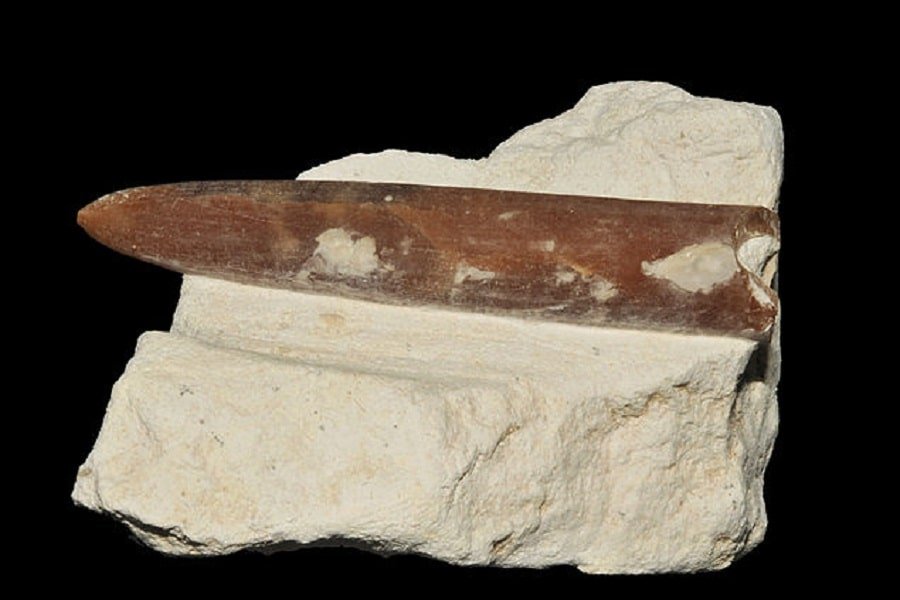
Counterweight
So the phragmocone had an important function. However, since it was quite a thick skeleton, it was heavy at the same time.
Ideally, the belemnites would just get rid of the harder skeleton altogether for the sake of quickness. However, it didn’t yet evolve to do so, as modern squids. Also, the phragmocone was located in the middle. So without a counterweight, it would literally pull the ancient animal to the bottom of the sea.
In order to account for the weight of the phragmocone, scientists believe that the rostrum – the part on the far end of the tail – was just there to function as the counterweight to the phragmocone. Because of it, the weight of the skeleton was more evenly spread and the animal could move a lot more swiftly.
Belemnite Battlefields
Because of their shape, belemnite rostra have also been referred to as ‘fossil bullets’. Jokingly, mass finds of rostra are called ‘belemnite battlefields’.
And these ‘battlefields’ are actually very prevalent. Their findings are related to the mating habits of the belemnites. While these habits are nothing different from the modern squid, they’re still quite fascinating.
First, the ancient animals would all gather on their ancestral spawning ground to mate. Afterward, they would die almost immediately. First the male and afterward the female. They literally push some sort of self-destruction button to allow a new generation to live.
Since many animals went to the same place to mate and die, these huge concentrations of belemnite fossils would occur. Hence the ‘belemnite battlefields’.
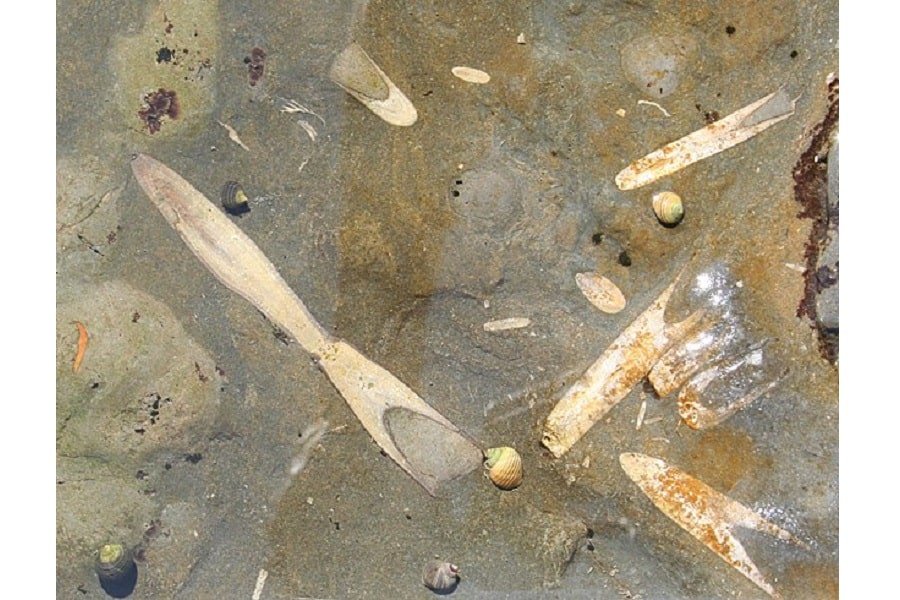
Tentacles and the Ink Sack
While the tail is the most distinctive part of the animal, its tentacles were also quite intricate. Many sharp, strong curved hooks that were attached to the tentacles have been preserved in belemnite fossils. It is believed that they used these hooks to hold onto their prey. Mostly, their prey consisted of small fish, mollusks, and crustaceans.
One arm hook in particular was rather big. Scientists believe that these bigger hooks were used for mating. On the ten arms, or tentacles, of the ancient animal, a total of 30 to 50 pairs of arm hooks could be found.
Soft Tissue
As indicated earlier, the skeleton formed in the tail, as opposed to the soft tissues in the head or the tentacles. This also means that the tail is the best-preserved part of the whole animal. Soft tissue simply doesn’t survive very long and is rarely found in belemnite remains.
Still, there are some fossils that contain these softer tissues. In southern England and other parts of northern Europe, some examples of Jurassic rocks with fossilized black ink sacks were found.
After careful extraction, some of the ink was used to draw a contemporary family member of the ancient animals: an octopus.
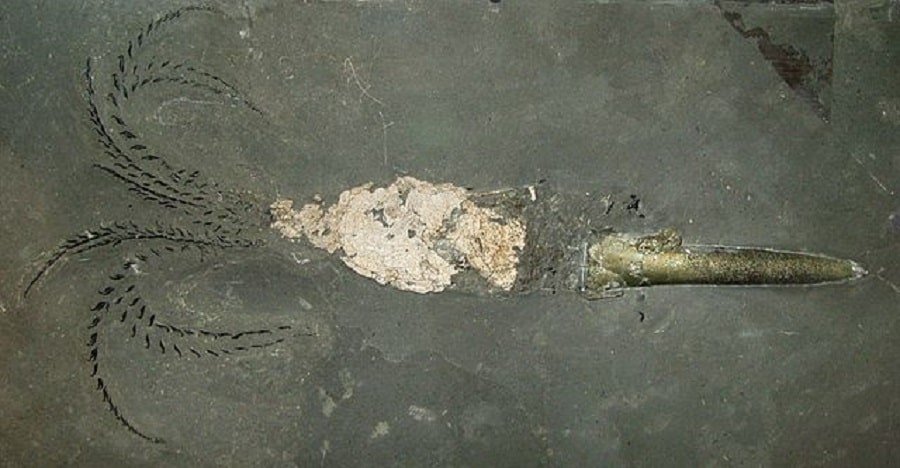
Are Belemnite Fossils Rare?
While there aren’t many fossils from the Jurrasic time, belemnite fossils are actually very common. On one site in south Norfolk (England), a stunning total of 100,000 to 135,000 fossils were found. Every square meter had about three belemnites. Because of their high quantities, belemnite fossils are useful tools for geologists to research prehistoric climate changes and ocean currents.
A belemnite fossil tells something about the climate because geologists can measure the oxygen isotope of the calcite. After testing in the laboratory, the temperature of the seawater in which the belemnite lived can be determined based on the number of oxygen isotopes in their bodies.
Belemnites were one of the first fossil groups to be used to do research in this way because the belemnite rostra isn’t subjected to chemical change during the fossilizing process.
Another reason why fossils are useful tools for geologists is that there was rarely more than one single species of belemnite present at the same time. Fossils from different places can therefore be correlated and compared.
In turn, this can be used as a measurement for other Jurassic rocks and fossils, as well as differences in the environment over time and between places.
Lastly, the fossils tell us a fair bit about the direction of the currents of the sea at the time. If you find a rock where the belemnites are abundant, you will also see that they are aligned in a particular direction. This indicates the current that was prevalent at the time when the particular belemnites died.
Where are Belemnite Fossils Found?
The fossils that are related to the earliest belemnites are exclusively found in northern Europe. These mainly belong to the early Jurassic period. However, the fossils that belong to the early Cretaceous periods can be found all over the world.
Late Cretaceous belemnites are mostly used for climate comparisons on a global scale because this was the time that the species was the most widespread.
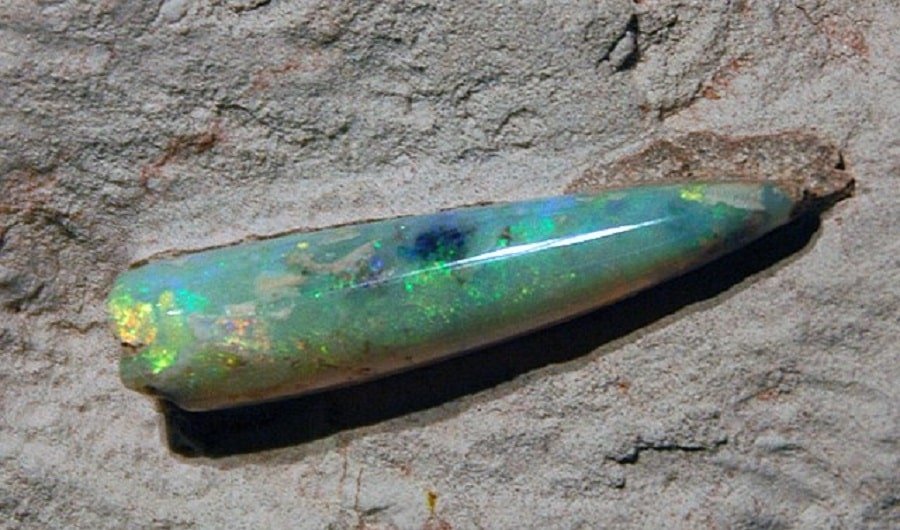
Myths and Culture Surrounding the Belemnite
The fossil record of the Cretaceous and Jurassic belemnites is impressive, and they tell us a lot about ancient global climate and marine ecosystems. However, there is also a cultural aspect to it. The fossils have been found a long time ago which also explains why their name is based on an ancient Greek word.
The Greeks didn’t know, however, that it was an animal that lived millions of years ago. They simply thought they were gemstones like lyngurium and amber. This idea was also adopted in Britain and Germanic folklore, which resulted in the many different nicknames for the belemnite: finger stone, Devil’s finger, and ghostly candle.
How the ‘gemstones’ arrived on this earth was also a subject of imagination. After heavy rain and thunderstorms, a fossil belemnite would often be left exposed in the soil. According to the folklore of the northern Europeans, the fossils were the lightning bolts that were thrown from the sky during the rain.
In some parts of rural Britain, this belief persists to this very day. It has probably to do with the fact that a belemnite fossil was also used for its medicinal powers. For example, the rostra of the belemnite was used for curing rheumatism and to distemper horses.